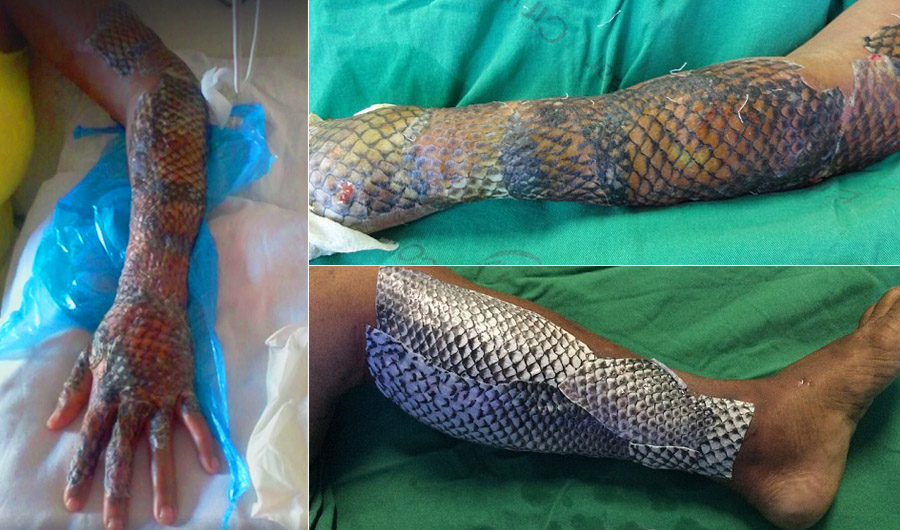

Hence, the present study aimed to evaluate the Nile tilapia (Oreochromis niloticus) skin as a biological dressing for the full-thickness cutaneous metacarpal wounds in donkeys ( Equus asinus). Moreover, available literature lacks detailed studies regarding the use of fish skin as an equine wound dressing. However, the treatment with the fish skin is still in the experimental stage. įish skin has been used in elsewhere cases as an occlusive wound dressing for burn management in humans and animals (pony, mountain lion, and bears) demonstrating a complete re-epithelialization in a brief time faster than expected. Moreover, fish skin dressing enhanced the wound healing process and reduced the need for pain medications. No dressing changes were required as frequently as the gauze. Fish skin has been used for the first time as a biological wound dressing for the second- and third-degree burns of humans in Brazil. įish skin contains collagen type I and III in large quantities, a protein that is potential to promote wound healing. Several biological materials have been used for wound dressing in equines including: the porous bovine collagen membrane, keratinocyte collagen membrane, split-thickness allogeneic skin, allogeneic peritoneum, and xenogeneic porcine small intestinal submucosa. īiological wound dressings are that derived from natural resources and are known for their biocompatibility and biodegradability. These wounds are more problematic than others located elsewhere in the body due to its high susceptibility to contamination, the poor healing nature, and high tendency to form exuberant granulation tissue. Wounds of the distal limbs of equines are common and represent more than 60% of all wounds.

Conclusionsįish skin dressing accelerated the wound healing process and efficiently inhibited the local microbial activity and exuberant granulation tissue formation suggesting its reliable and promising application for metacarpal wounds of donkeys. No frequent dressing changes were needed. Resultsįish skin-dressed wounds showed a significant ( P < 0.0001) reduction in microbial counts (Total viable bacterial count, Staphylococcal count, and Coliform count), a significant ( P < 0.0001) decrease in the wound size, and a significant reduction ( P < 0.0001) in the epithelial gap compared to the untreated wounds. Wounds were evaluated microbiologically, grossly, and histologically on days 7, 14, and 21 post-wound inductions. Wounds on the right metacarpals (treated wounds, n = 9) were dressed with sterile fish skins, while wounds on the left metacarpals (control wounds, n = 9) were dressed with sterile non-adherent dressing pads without any topical applications. Bilateral, circular full-thickness excisional skin wounds (2 cm in diameter) were created on the dorsal aspect of the mid-metacarpals of each donkey.

Here, fish skin dressings were obtained from fresh Nile tilapia (Oreochromis niloticus and sterilized by immersion in silver nanoparticles (AgNPs) solution for 5 min, with no change in collagen content. The study was conducted on nine clinically healthy donkeys ( n = 9). The aim of the present study was to evaluate the Nile tilapia skin as a biological dressing for full-thickness cutaneous metacarpal wounds in donkeys. The use of biological dressings has recently emerged in the management of burns and wounds.


 0 kommentar(er)
0 kommentar(er)
